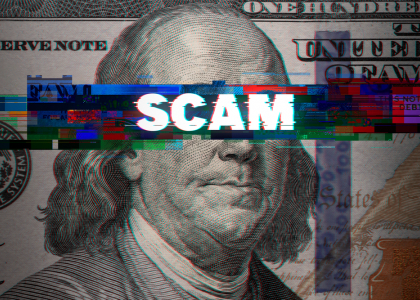From this article you will learn that fiat currency is modern money that we use every day. As part of financial literacy, everyone needs to understand what banknotes are, what affects their value, and what should be expected from the same value.
What is fiat money
Fiat money is a currency that is not backed by a physical asset and is a legal method of payment. Within the modern financial system, the dominant type of currency is fiat money. Almost all currencies you come across are fiat, including the hryvnia, pound sterling, US dollar and many others. And the euro, a young currency, was originally created as a fiat currency. It is worth noting that we are talking specifically about physical assets.
How fiat money works
It becomes easier to understand what fiat currency is if you know that modern fiat money is backed by such a concept as purchasing power. Purchasing power is the ability to be accepted as payment for a product/service; therefore, your ability to buy bread in exchange for banknotes.
This purchasing power exists largely through a regulatory obligation to accept that particular currency. Article 35 of the Law of Ukraine “On the National Bank” says that the hryvnia is the only legal method of payment in Ukraine. Accordingly, if you set the price in US dollars, you are technically breaking the law.
In turn, the US dollar in the United States is not the only means of payment, but only the preferred one. Accordingly, if in the United States you want to buy bread for Mexican pesos and the seller is willing to sell it, your transaction will not be illegal.
Thus, your ability to convert banknotes in different situations into bread is a manifestation of the purchasing power that fiat banknotes provide.
FC Daliz-Finance LLC has the ability to both purchase military bonds on the secondary market and has experience in purchasing military bonds through primary dealers. In the first months of the war, our clients bought war bonds worth more than 500 million hryvnia. Join their number by leaving a request on our website.
Read also: How to buy bonds in Ukraine
Fiat currency : history
For a long period of time, the standard was the gold standard. He relied on the fact that all banknotes could be exchanged at any time for a predetermined amount of gold in the national bank of the issuer of this currency. In everyday life, it was easier to carry a piece of paper with you than to carry gold bars directly, especially for transactions of large amounts.
Fiat currency in simple words is a separate story of the complete transition from the gold standard to fiat currency for almost every currency in the world.
At different periods, the direct conversion of banknotes into precious metals was suspended, but still resumed.
U.S. dollar
The US dollar remained convertible into gold until 1971 due to the Bretton Woods system.
The Bretton Woods system is a system of international agreements in which various currencies were pegged at a rigid exchange rate to the US dollar and, accordingly, to the gold standard of the dollar. It ceased to exist after it refused to convert US dollars into gold - a rigid currency peg to the dollar ceased to make sense.
In 1971, the US refusal to convert the dollar into gold can, in fact, be considered the end of the gold standard as a currency standard. But even during the existence of the gold standard, the peg was very conditional. For example, in 1933, all gold coins in circulation in the United States were confiscated. Moreover, in the presence of a paper dollar, the peg was about 1.505 grams of gold per dollar. In 1934, apparently after the confiscation of all gold coins, the rate was changed to 0.888 grams of gold per dollar, that is, almost half as much.
GBP
Another example of fiat currency — the British pound lost its peg to gold during the First World War due to the enormous costs incurred by the British crown. The country could not back up these expenses with gold; accordingly, the pound sterling was temporarily untied from the gold standard. In the interwar period, for example, in 1925, there were attempts to return to the gold standard, but already in 1931 it was canceled.
In 1940, the pound sterling was strictly pegged to the US dollar. It was in the post-war period that this agreement served as the beginning of the Bretton Woods system, which we mentioned above and will describe in more detail below. Accordingly, even though formally the pound sterling was a fiat currency. Its tight peg to the US dollar and the convertibility of the US dollar into gold meant that the pound sterling was de facto pegged to gold.
Swiss frank
Fiat money includes the Swiss franc, which was on the gold standard until 1936 and joined the US dollar peg in 1945. Accordingly, like the British pound, the Swiss franc, as a formal fiat currency , was essentially backed by the gold standard through a direct peg to the dollar.
Advantages and disadvantages of fiat money
Within the framework of our article, we will try to outline the basic advantages and disadvantages of fiat currency.
Advantages of fiat money:
- The country's central bank has more control over a number of macro-financial indicators as part of its monetary policy.
- Free conversion without reference to gold and foreign exchange reserves helps international trade.
Disadvantages of fiat currency:
- The risk of hyperinflation with illiterate monetary policy.
- The possibility of the government reducing the value of banknotes by an implicit method.
Read also: What is inflation: definition, causes, consequences
Fiat money in the global economy
It is important to understand that fiat money is the newest form of money. Economic crises occurred even before the advent of fiat currency, and the depreciation of banknotes in the hands of the population occurred during the times of not only the gold standard, but also ordinary gold coins. Back in Roman times, a typical government “reform” was to change the percentage of precious metals in a coin.
At the same time, fiat money allows for international trade with a free exchange rate, which is formed by the demand for currency. In turn, the demand for currency depends partly on the trade balance.
Frequently Asked Questions: what is fiat money
What is the difference between fiat currency and cryptocurrency
In addition to purely physical characteristics (it is likely that in the future fiat currency may well be issued in the form of a cryptocurrency), the purchasing power of a modern fiat currency is several times higher than that of any cryptocurrency. It’s difficult to buy bread with ether.
What are the types of fiat money
Fiat money is often found in the form of cash (paper in hand) and non-cash (in an account at a relevant institution).





